Related Research Articles

The Pomo are a Native American people of California. Historical Pomo territory in Northern California was large, bordered by the Pacific Coast to the west, extending inland to Clear Lake, and mainly between Cleone and Duncans Point. One small group, the Tceefoka, lived in the vicinity of present-day Stonyford in Colusa County, separated from the core Pomo area by lands inhabited by Yuki and Wintuan speakers.
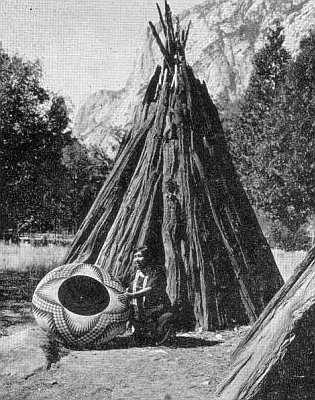
Basket weaving is the process of weaving or sewing pliable materials into three-dimensional artifacts, such as baskets, mats, mesh bags or even furniture. Craftspeople and artists specialized in making baskets may be known as basket makers and basket weavers. Basket weaving is also a rural craft.

Northern Pomo is a critically endangered Pomoan language, formerly spoken by the indigenous Pomo people in what is now called California. The speakers of Northern Pomo were traditionally those who lived in the northern and largest area of the Pomoan territory. Other communities near to the Pomo were the Coast Yuki, the Huchnom, and the Athabascan. Ukiah High School first began offering Northern Pomo in the Fall 2020.
The Hopland Band of Pomo Indians of the Hopland Rancheria is a federally recognized tribe of Pomo people in Mendocino County, California, south of Ukiah. The Hopland Band Pomos traditionally lived in the Sanel Valley.

Grace Carpenter Hudson (1865–1937) was an American painter based in Northern California. She was nationally known during her lifetime for a numbered series of more than 684 portraits of the local Pomo natives. She painted the first, National Thorn, after her marriage in 1891. Her last work was completed in 1935.
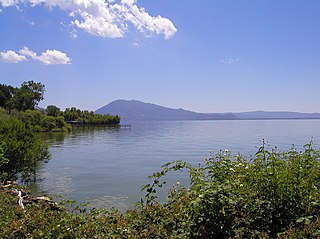
The Lake Miwok are a branch of the Miwok, a Native American people of Northern California. The Lake Miwok lived in the Clear Lake basin of what is now called Lake County. While they did not have an overarching name for themselves, the Lake Miwok word for people, Hotsa-ho, was suggested by A. L. Kroeber as a possible endonym, keeping with a common practice among tribal groups and the ethnographers studying them in the early 20th Century and with the term Miwok itself, which is the Central Sierra Miwok word for people.

Stephen Powers (1840–1904) was an American journalist, ethnographer, and historian of Native American tribes in California. He traveled extensively to study and learn about their cultures, and wrote notable accounts of them. His articles were first published over a series of years in the Overland Monthly journal, but collected in The Tribes of California (1877) published by the US Geological Survey.
Pomo traditional narratives include myths, legends, tales, and oral histories preserved by the Pomo people of the North Coast region of northwestern California.

Lucy Parker Telles was a Mono Lake Paiute - Kucadikadi and Southern Sierra Miwok Native American basket weaver.
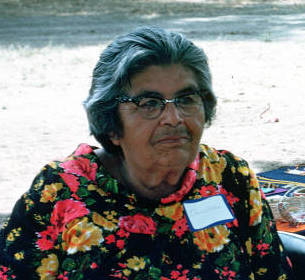
Elsie Comanche Allen was a Native American Pomo basket weaver from the Cloverdale Rancheria of Pomo Indians of California in Northern California, significant as for historically categorizing and teaching Californian Indian basket patterns and techniques and sustaining traditional Pomo basketry as an art form.
Mabel McKay (1907–1993) was a member of the Long Valley Cache Creek Pomo Indians and was of Patwin descent. She was the last Dreamer of the Pomo people and was renowned for her basket weaving.

The Pinoleville Pomo Nation is a federally recognized tribe of Pomo people in Mendocino County, California. Leona Williams serves as Tribal Chairperson.

Julia Florence Parker is a Coast Miwok-Kashaya Pomo basket weaver.
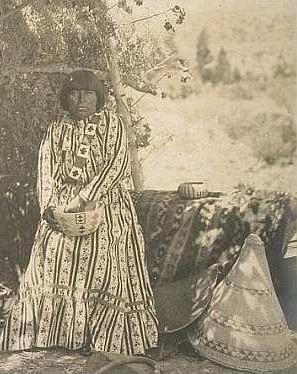
Nellie Charlie (1867–1965) was a Mono Lake Paiute - Kucadikadi basketmaker associated with Yosemite National Park. She was born in Lee Vining, California, the daughter of tribal headman Pete Jim, and his wife Patsy, also a basket maker. She married Young Charlie, a Mono Lake Paiute - Kucadikadi man from Yosemite, and they had six children. Her Paiute name was Besa-Yoona.

Mary Kawennatakie Adams was a Mohawk First Nations textile artist and basket maker.
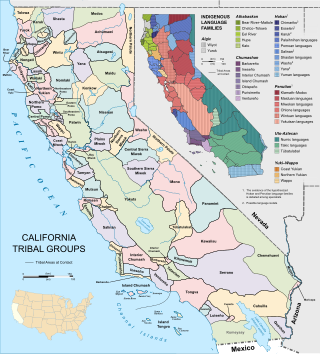
A fully feathered basket is a type of basket crafted by a select group of Indigenous people of California who have traditionally resided in the coastal region of Northern California above San Francisco. The baskets are distinguished by the matted layer of feathers, which completely cover the exterior of the basket. They are highly collectible and renowned for their fine craftsmanship.
Mary Knight Benson was a Pomo woman from California who excelled in basket making. Her work is highly collectible and renowned for fine craftsmanship. She and her husband, William Ralganal Benson, partnered in basket weaving, and their work is in public museum collections.
Susan Billy is a Native American Pomo basket weaver from the Hopland Band Pomo Indians of Northern California.
Susan (Susie) Santiago Billy born Andrea Susan Santiago, was a Native American Pomo basket weaver from the Hopland Band Pomo Indians of California in Northern California. Her parents were Silva Santiago and Tudy Marie Arnold.

Luwana Quitiquit was a Native American administrator, activist, and basket weaver. During the Occupation of Alcatraz she worked as one of the cooks who provided food to those living on the island. Her career was as an administrator for various California Indian organizations. Subsequently, she became a well-known doll maker, basketweaver, jeweler, and teacher of Pomo handicrafts. In 2008, she and her family were disenrolled from the Robinson Rancheria of Pomo Indians of California. She fought the action claiming it was politically motivated until her death. Posthumously, in 2017, her membership, as well as for her other family members, was reinstated in the first known case where a tribe reversed its decision on membership termination without a court ruling.
References
Books
- Abel-Vidor, Suzanne; Brovarney, Dot; Billy, Susan (1996). Remember Your Relations: The Elsie Allen Baskets, Family, and Friends. Berkeley: Heydey Books. ISBN 978-1-59714-169-7.
- Bibby, Brian (2012). Essential Art: Native Basketry from the California Indian Heritage Center. Berkeley: Heydey Books. ISBN 978-0-930588-80-9.
- Luthin, Herbert (2002). Surviving Through The Days. Berkeley, Los Angeles, London: University of California Press. ISBN 978-0520222700.
Websites
- Bacich, Damien (2018). "Indians of the California Missions: Territories, Affiliations and Descendants". Californiafrontier.net. The California Frontier Project. Retrieved 13 December 2018.
- Harney, Tom (1992). "Beauty of Pomo Indian Baskets Endures; Their Value Continues to Rise : Native culture: The weavers combined artistry with materials such as bird feathers and shells to create stunning works. The craft is still practiced". Los Angeles Times . Retrieved 16 December 2018.
- "Infinity of Nations". National Museum of the American Indian. 2018. Retrieved 16 December 2018.
- Leibowitz, Ed (2004). "Token of Appreciation: A grateful Pomo Indian's gift to a friend exemplifies the brightest form of Native American artistry". Smithsonian.com. Smithsonian Magazine. Retrieved 13 December 2018.
- "Pomo People: Brief History". National Museum of the American Indian. 1997. Retrieved 16 December 2018.